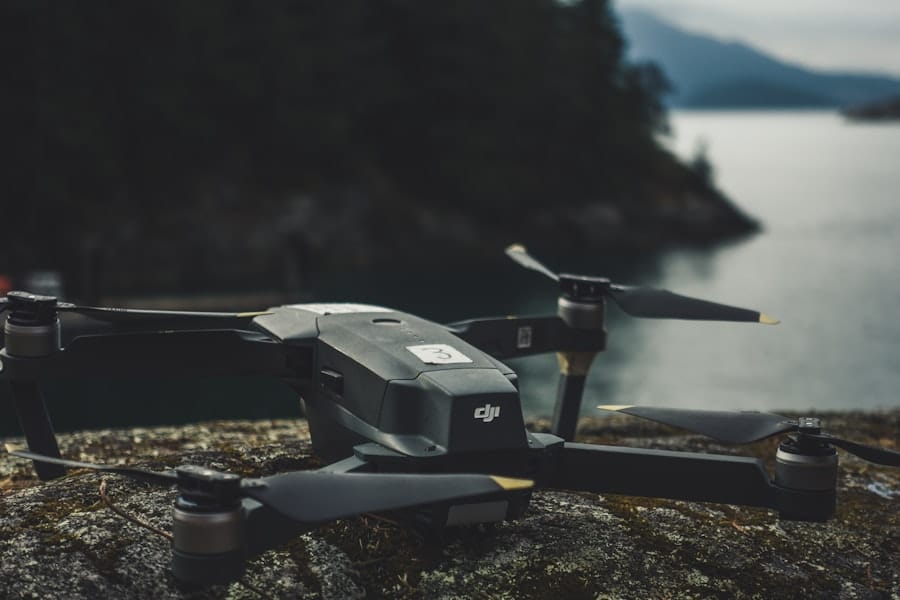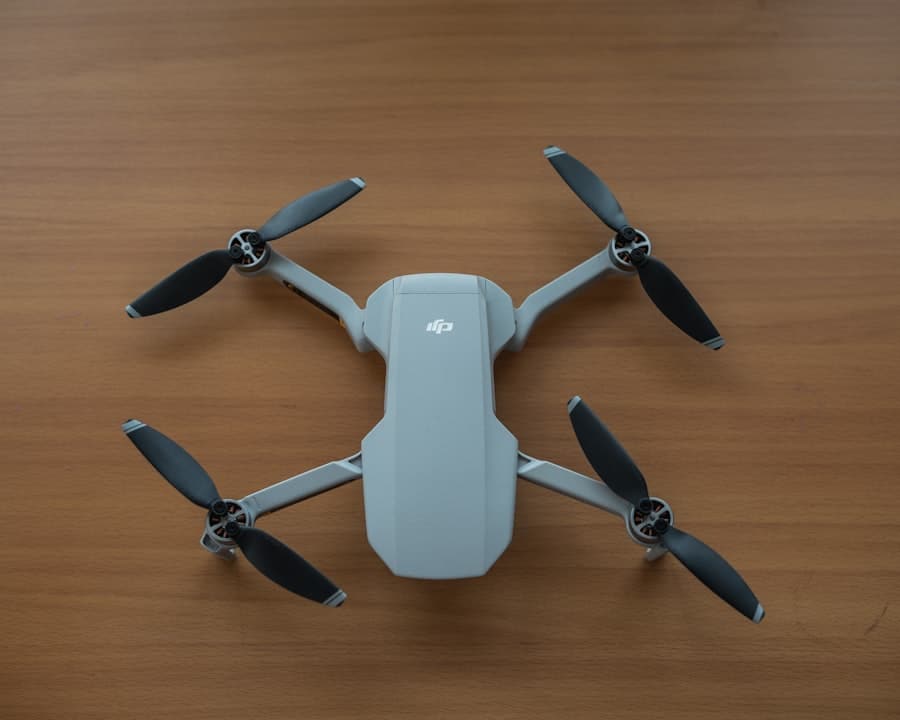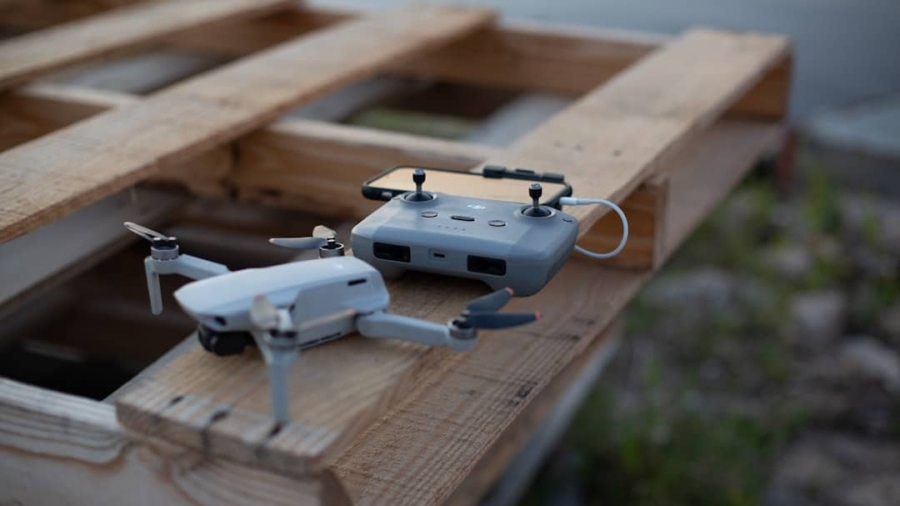The advent of artificial intelligence (AI) has revolutionized numerous industries, and the field of aerial technology is no exception. AI-powered drones, equipped with advanced algorithms and machine learning capabilities, have emerged as a transformative tool in various applications, including agriculture, surveillance, and environmental monitoring. These unmanned aerial vehicles (UAVs) are not only capable of capturing high-resolution images and videos but also possess the intelligence to analyze data in real-time, making them invaluable assets in complex scenarios.
The integration of AI into drone technology has paved the way for innovative solutions to pressing global challenges, particularly in the realm of environmental conservation and disaster management. One of the most critical areas where AI-powered drones are making a significant impact is in forest fire prevention and management. As climate change exacerbates the frequency and intensity of wildfires, traditional methods of monitoring and combating these blazes are becoming increasingly inadequate.
The ability of AI-powered drones to operate autonomously, gather vast amounts of data, and process that information quickly allows for a more proactive approach to fire management. By leveraging these advanced technologies, authorities can enhance their preparedness and response strategies, ultimately saving lives, protecting ecosystems, and preserving valuable resources.
Key Takeaways
- AI-powered drones are revolutionizing the way forest fires are prevented, detected, and managed.
- AI-powered drones play a crucial role in early detection and prevention of forest fires by providing real-time monitoring and analysis of potential fire hazards.
- These drones use advanced AI algorithms and sensors to detect signs of fire, such as smoke, heat, and changes in vegetation, from a safe distance.
- AI-powered drones assist in firefighting operations by providing valuable data and insights to firefighters, helping them make informed decisions and strategize their approach.
- The use of AI-powered drones in forest fire management offers advantages such as improved efficiency, cost-effectiveness, and enhanced safety for both firefighters and the environment.
The Role of AI-Powered Drones in Forest Fire Prevention
AI-powered drones play a pivotal role in forest fire prevention by providing early detection capabilities and facilitating comprehensive monitoring of forested areas. These drones are equipped with thermal imaging cameras and multispectral sensors that can detect temperature anomalies and changes in vegetation health, which are often precursors to wildfires. By continuously surveying large expanses of land, these drones can identify potential fire hazards before they escalate into full-blown disasters.
This proactive approach is crucial in regions prone to wildfires, where timely intervention can significantly reduce the risk of catastrophic fires. Moreover, the data collected by AI-powered drones can be analyzed using machine learning algorithms to predict fire behavior and assess the risk levels associated with specific areas. For instance, by examining historical fire data alongside current environmental conditions—such as humidity, wind speed, and temperature—AI models can generate risk assessments that inform land management practices.
The integration of AI into drone technology thus enhances situational awareness and empowers decision-makers to take informed actions that mitigate fire risks.
How AI-Powered Drones Detect and Monitor Forest Fires

The detection and monitoring capabilities of AI-powered drones are rooted in their sophisticated sensor technology and data processing algorithms. These drones utilize a combination of visual cameras, thermal imaging sensors, and gas detectors to identify signs of fire or potential ignition sources. Thermal cameras are particularly effective in detecting heat signatures that may indicate a fire’s presence, even through dense foliage or during nighttime operations.
This capability allows drones to cover vast areas quickly, providing real-time data that is crucial for early intervention. Once a potential fire is detected, AI algorithms analyze the data to assess the situation further. For example, machine learning models can differentiate between natural heat sources—such as hot rocks or animal activity—and actual fire incidents.
This level of analysis reduces false alarms and ensures that firefighting resources are deployed efficiently. Additionally, drones can continuously monitor areas over time, tracking changes in temperature or vegetation health that may signal an increased risk of fire. By maintaining a constant watch over vulnerable regions, AI-powered drones serve as an early warning system that enhances overall forest fire management strategies.
The Use of AI-Powered Drones in Firefighting Operations
In addition to their role in prevention and monitoring, AI-powered drones are increasingly being utilized during active firefighting operations. When a wildfire breaks out, these drones can provide critical situational awareness to incident commanders on the ground. Equipped with real-time video feeds and thermal imaging capabilities, drones can help assess the fire’s size, intensity, and direction of spread.
This information is vital for developing effective firefighting strategies and allocating resources where they are needed most. Furthermore, AI-powered drones can assist in delivering supplies to remote or inaccessible areas during firefighting efforts. For instance, they can transport water or fire retardant materials directly to hotspots that are difficult for ground crews to reach due to rough terrain or ongoing fire activity.
This capability not only enhances the efficiency of firefighting operations but also reduces the risk to human firefighters who might otherwise be exposed to dangerous conditions. By integrating drones into firefighting strategies, agencies can improve their response times and effectiveness in combating wildfires.
Advantages of Using AI-Powered Drones in Forest Fire Management
The advantages of employing AI-powered drones in forest fire management are manifold. One of the most significant benefits is their ability to cover large areas quickly and efficiently. Traditional methods of monitoring forests often involve ground patrols or manned aircraft, both of which can be time-consuming and resource-intensive.
In contrast, drones can be deployed rapidly and can survey vast landscapes in a fraction of the time it would take human crews. This efficiency allows for more frequent monitoring and quicker responses to emerging threats. Another advantage lies in the cost-effectiveness of using drones compared to conventional firefighting methods.
Manned aircraft operations are expensive due to fuel costs, maintenance, and personnel requirements. Drones, on the other hand, require less operational overhead while still delivering high-quality data and support during firefighting efforts. Additionally, the use of AI algorithms enables drones to process information autonomously, reducing the need for extensive human intervention during data analysis.
Challenges and Limitations of AI-Powered Drones in Fighting Forest Fires

Despite their numerous advantages, the deployment of AI-powered drones in forest fire management is not without challenges. One significant limitation is the regulatory landscape surrounding drone operations. Many countries have strict regulations governing the use of UAVs, particularly in emergency situations where airspace may be crowded with manned aircraft engaged in firefighting efforts.
Navigating these regulations can complicate the timely deployment of drones when they are most needed. Additionally, while AI algorithms have made significant strides in accuracy and reliability, they are not infallible. The effectiveness of these systems depends heavily on the quality of the data they are trained on.
In regions where historical fire data is sparse or unreliable, AI models may struggle to make accurate predictions or assessments. Furthermore, environmental factors such as smoke or adverse weather conditions can hinder a drone’s ability to capture clear images or thermal readings, potentially leading to missed detections or false alarms.
Future Outlook for AI-Powered Drones in Forest Fire Prevention and Management
The future outlook for AI-powered drones in forest fire prevention and management is promising as technology continues to advance at a rapid pace. Ongoing developments in machine learning algorithms will likely enhance the predictive capabilities of these systems, allowing for even more accurate assessments of fire risk based on real-time environmental data. As more organizations invest in research and development for drone technology specifically tailored for wildfire management, we can expect innovations that improve both detection accuracy and operational efficiency.
Moreover, as public awareness grows regarding climate change and its impact on wildfire frequency and intensity, there will likely be increased funding and support for integrating advanced technologies into firefighting strategies. Collaborative efforts between government agencies, private companies, and research institutions could lead to the development of more sophisticated drone systems capable of operating autonomously over extended periods while adapting to changing conditions on the ground.
The Impact of AI-Powered Drones on Forest Fire Fighting Efforts
The integration of AI-powered drones into forest fire fighting efforts represents a significant leap forward in how we approach wildfire management. By enhancing detection capabilities, improving situational awareness during active fires, and streamlining resource allocation, these advanced technologies have the potential to save lives and protect ecosystems from devastating fires. While challenges remain regarding regulation and data reliability, ongoing advancements in drone technology promise a future where these tools become indispensable allies in our fight against wildfires.
As we continue to grapple with the increasing threat posed by climate change-induced wildfires, embracing innovative solutions like AI-powered drones will be crucial for effective forest fire prevention and management strategies. The impact of these technologies extends beyond immediate firefighting efforts; they represent a paradigm shift towards more proactive and data-driven approaches to environmental stewardship that could redefine our relationship with nature in an era marked by unprecedented challenges.
In the ongoing battle against forest fires, technology continues to play a pivotal role, with AI-powered drones leading the charge in innovative firefighting strategies. These drones are equipped with advanced sensors and algorithms that allow them to detect and monitor fires more efficiently than traditional methods. For those interested in the broader implications of technology in everyday life, an article titled “What is the Best Tablet to Buy for Everyday Use?” explores how technological advancements are also enhancing personal and professional productivity. This piece provides insights into selecting the right tablet, which can be an essential tool for both work and leisure, much like how drones are becoming indispensable in environmental management.
FAQs
What are AI-powered drones?
AI-powered drones are unmanned aerial vehicles equipped with artificial intelligence technology that allows them to perform tasks autonomously, such as navigating through environments, identifying objects, and making decisions based on the data they collect.
How are AI-powered drones used in fighting forest fires?
AI-powered drones are used in fighting forest fires by providing real-time data and intelligence to firefighters and emergency response teams. They can be equipped with thermal imaging cameras and other sensors to detect the location and spread of fires, as well as to identify hotspots and areas of concern.
What are the advantages of using AI-powered drones in fighting forest fires?
The advantages of using AI-powered drones in fighting forest fires include their ability to access hard-to-reach areas, their capacity to provide real-time data and intelligence, and their potential to assist in decision-making processes for firefighting efforts. Additionally, they can help reduce the risk to human firefighters by providing critical information from a safe distance.
Are there any limitations to using AI-powered drones in fighting forest fires?
Some limitations of using AI-powered drones in fighting forest fires include their dependence on weather conditions and visibility, as well as their potential limitations in carrying heavy payloads, such as water or fire retardant. Additionally, regulations and airspace restrictions may impact their deployment in certain areas.
How do AI-powered drones contribute to the overall firefighting efforts?
AI-powered drones contribute to the overall firefighting efforts by providing valuable data and intelligence that can help firefighters make informed decisions, prioritize resources, and strategize their firefighting tactics. They can also assist in monitoring the progression of the fire and assessing the effectiveness of firefighting operations.

